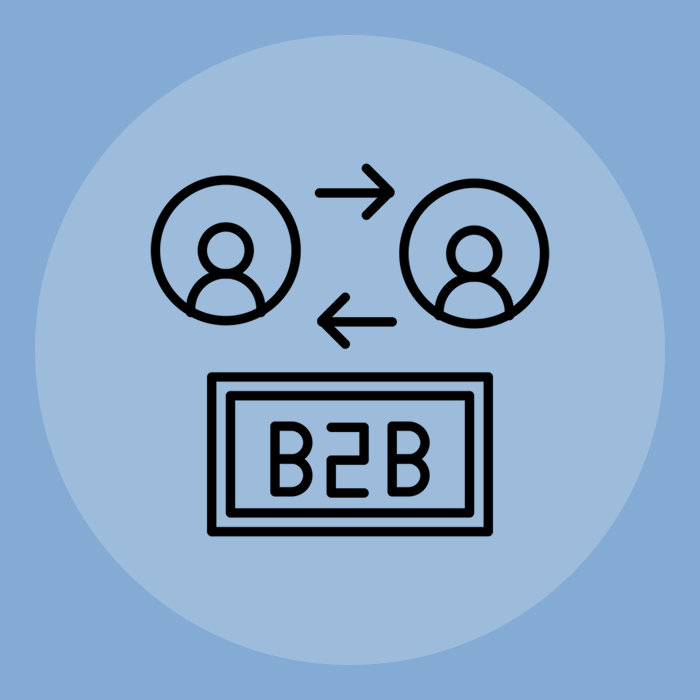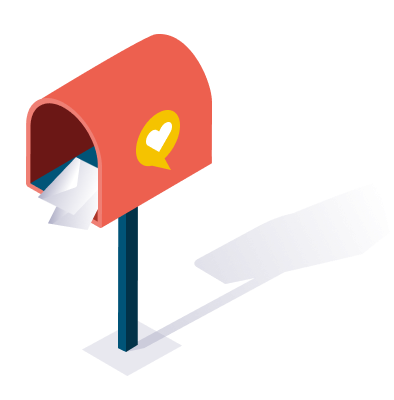Learn how B2B storytelling builds emotional resonance, simplifies complexity, and drives conversions.
Storytelling is frequently viewed as a B2C strategy, used to sell emotion-driven products to individual consumers. However, that presumption fails to account for a significant change: B2B buyers are no longer motivated solely by logic. High-stakes purchasing decisions are increasingly based on an emotional connection. B2B companies craft compelling narratives that will form lasting connections beyond the transaction.
In fact, 95 percent of purchasing decisions are subconscious, made on an emotional level, not based on features, according to Harvard Business School. Even in the B2B world, trust, credibility, and ability to relate affect conversions as much as the price point or specifications.
That’s where B2B storytelling becomes a strategic tool. Instead of the same-old, generic marketing messages, actual stories provide something no consumer can resist: clear, empathetic resonance. They assist brands in reducing complexity, creating human connections, and competing in crowded markets.
This guide covers in-depth how to use B2B brand storytelling that both leads with relevance and lands on results.
What is B2B Storytelling? And Why Storytelling Works in B2B
B2B storytelling is telling a powerful story to show a brand's value to a business buyer. It involves real people, real challenges, and real results—not features and functionality.
Storytelling combines passion and logic via actual experiences. It does not imply inventing fiction; it entails narrating true stories that demonstrate transformation. These stories make conceptual outcomes concrete and allow audiences to see themselves accomplishing similar outcomes. By demonstrating genuine journeys, businesses can build credibility and instill confidence at a level that only numbers and facts cannot achieve.
Here’s why storytelling works in B2B:
- Emotional connection: Purchasers respond better to a human story than cold data points.
- Clarifies complexity: Stories simplify abstract concepts so that they’re easier to grasp without losing the deeper meaning.
- Humanise the brand: Stories come with characters, conflict, and resolution, so that the brand can become more relatable.
- Enhances memory retention: Studies by Jerome Bruner have revealed that individuals are 22 times more likely to remember stories than they are facts.
- Establishes empathy and trust: Buyers identify with other customers facing similar challenges, which instills confidence in your solution.
- Engaging people is better: Emotional stories retain attention further and are more likely to be shared or recalled.
Emotion is not fluff in B2B storytelling. It is the bridge between the value of your product and your buyer’s motivation to buy.
Also read: How Data-Driven Marketing Is Reshaping B2B Strategy in 2025
B2B Storytelling Framework
A solid B2B storytelling framework follows the pattern of captivating narratives. It simplifies complicated offerings into stories that are both emotive and reasonable. The idea is for potential consumers to recognize themselves in the story and trust your solution.
Here’s how to structure your storytelling in B2B marketing:
1. Hero (The Customer)
Your customer is the protagonist. Focus on one individual whose role, pain, and goals reflect your target audience. Avoid generalizing to a company level; stories are more powerful when human.
2. Problem (Their Challenge)
Highlight the customer’s pain point in detail. Go beyond surface-level issues to capture what’s truly at stake.
3. Guide (Your Brand)
You want your audience to view your brand as a trusted guide rather than the hero of the story. This approach shows that you’re not only knowledgeable but also empathetic. It sends a message that you truly understand their struggles and that you’ve successfully helped others who faced similar challenges.
4. Plan (Your Solution)
Explain how your solution fits into the customer’s journey. Keep the narrative focused and avoid listing features. Instead, show how the solution offered clarity, reduced risk, or created immediate value.
Conclude with a clear before-and-after scenario. Show measurable outcomes, including time saved, ROI achieved, or growth enabled. Pair metrics with emotional wins like renewed confidence or reduced pressure. This dual impact makes your story unforgettable.
How to Craft a Great B2B Story
The best B2B stories come down to clarity. Know who your audience is and what they want, what they cherish, and what they fear. Investigate your perfect customer’s job, objectives, daily struggles, and decision-making process. Without this context, your story won’t be meaningful to them.
Do not present a faceless organization as the story. Instead, think about a user or stakeholder. We relate when the story is told through one person’s eyes. It makes the journey relatable and believable.
Authenticity is essential. Skip corporate speak and speak in your customers’ natural language. Ground it in the actual experiences in the real world, real problems, and the real change. That honesty builds credibility. That authentic voice not only resonates more, but it also builds bonds with your audience based on honesty and trust.
When it comes to these types of storytelling in B2B marketing, your best content frequently comes from within your customers. Finally, case studies and testimonials offer evidence that your product yields results, not just hype. Demonstrate how your solution provided both rational outcomes and emotional satisfaction.
Some standout examples include:
- HubSpot, which turned its founders’ journey into a movement around inbound marketing
- Mailchimp, whose empathy-first approach positioned the brand as a small business ally
- Salesforce, using spotlight videos to celebrate customer success across industries
- Middleware, which captures real-world customer outcomes in its customer stories
B2B brand storytelling should move beyond messaging. It should make prospects feel seen, heard, and understood. That emotional alignment drives connection and loyalty better than any feature list ever could.
Also read: Marketing Campaigns and Legal Aspects: How to Avoid Conflicts?
Advantages of B2B storytelling
Effective B2B storytelling is not limited to blog posts or campaign videos. It thrives across multiple formats where trust and engagement matter most. Knowing where and how to use stories can elevate brand communication.
- About Us pages are often neglected. Do not list the milestones; instead, tell the story of your company through a human perspective (purpose, how you got started, and the vision). Help your readers understand what problem you can solve.
- LinkedIn posts make for great in-the-moment storytelling. Share an exclusive look at behind-the-scenes, your customers’ experience, or insights from your founder. Sharing in a vulnerable or lesson-learned way tends to get the highest engagement.
- Case studies are potent in the form of transformation stories. Go beyond facts. Position the customer as the hero and spotlight the moment when your product took the story in a new direction.
- Video testimonials add emotional depth. People seeing people actually talking about real wins is a quick trust factor. They work especially well in long B2B sales cycles, where credibility is crucial.
- Email nurture sequences can tell a story over time. Begin with the customer’s pain, then reveal knowledge, answers, and actual results in the following emails. It successfully keeps prospects interested while it subtly educates them.
- Founder journey stories ground your brand in authenticity. They give your values and decisions context. Prospects are always going to buy from people with conviction and clarity.
In storytelling B2B marketing, the right format amplifies the right message. Choose media where emotion, proof, and clarity intersect. This alignment ensures your stories leave a lasting impression.
Common Mistakes in B2B Storytelling
A lot of attempts at B2B storytelling, even the thoughtfully structured ones, don't work if the most basic principles are ignored. The common trouble spots include:
- Too much jargon and data: Presenting phrases and numbers that the reader finds overpowering depletes the story's emotional impact.
- Make the brand the hero: Strong B2B brand storytelling prioritizes the consumer over the organization.
- Forgetting the emotional arc: Stories that lack emotion simply cannot create trust or stick in the memory of the audience.
- Not sticking to storytelling: One-off stories simply cannot accelerate the momentum needed for long-term brand recognition or loyalty.
Integrating Storytelling into Your B2B Marketing Strategy
Here are some of the key steps:
- Align stories from various functions: This ensures that the sales, marketing, and customer success teams remain consistent. When there is consensus around a single brand story, this not only reinforces your brand message, making the audience comfortable and know what to expect from you at every touch point. This is not only good for sounding good; it makes internal operations seamless and external perception clear, leading to a solid understanding of the worth of your business.
- Create a centralized repository for stories: Gather front-line consumer testimonials, long-form case studies, and founder anecdotes. This adds to a live content bank.
- Train teams in telling good stories: Storytelling doesn't come naturally. Organise workshops on composing stories around customer outcomes. Allow sales representatives to start with context, rather than features. Let marketers write content that reaches real emotions.
- Storytelling may be used in paid campaigns: Be it Google Ads, LinkedIn retargeting, or account-based marketing, storytelling can serve as a great glue for engagement. Instead of all about product specs, tell stories about relatable challenges and outcomes. Visual-based formats, such as carousels and videos, help deepen this emotional connection.
- Add stories to the buyer journey: Map out narrative touchpoints in email processes, product demos, and onboarding. This strengthens brand memory and increases affinity over time.
Also read: 5 New Approaches in B2B Referral Strategies
Conclusion
In a congested market, stories make difficult concepts more accessible and help businesses stand out.
A good story boosts recall and engagement while writing an email, case study, or advertisement. Review your content and messaging to check if it speaks to human experience or just features.
It is not enough to talk about what you sell. You must show who you help and how. In B2B, the best stories are not just heard; they are remembered.
These stories create authentic connections, converting prospects into devoted advocates. They do more than communicate a message; they create action and inspire lasting trust. At the end of the day, compelling stories are your strongest currency in a busy marketplace.
FAQs
1. What makes a great B2B story?
A strong B2B story connects emotionally and clearly reflects your customer’s journey. The best stories humanize data, use authentic language, and stay focused on the customer, not the company.
2. Can storytelling increase B2B sales?
Yes. Storytelling also helps build trust, and trust is very valuable when we are in long sales cycles. Data is combined with emotional storytelling, and that instills confidence in the buyer. Research suggests that stories can improve message retention by 22 times more than facts alone.
3. How do I find good stories within my company?
Begin by conversing with front-line teams like sales, support, and customer success. Seek transformation moments where your solution actually made a difference. Case studies, support tickets, customer testimonials, and interviews are all rich sources of storytelling.
4. What tools help with storytelling?
Useful tools include:
- Notion or Trello: For building a story repository
- Lumen5 or Animoto: For video storytelling
- Canva: To visualize narratives
- StoryChief or Grammarly: For structured, polished writing
- CRM platforms: To track customer journeys and insights
Every tool should support your goal: consistent, audience-focused storytelling across touchpoints.
Subscribe to weekly updates
You’ll also receive some of our best posts today





